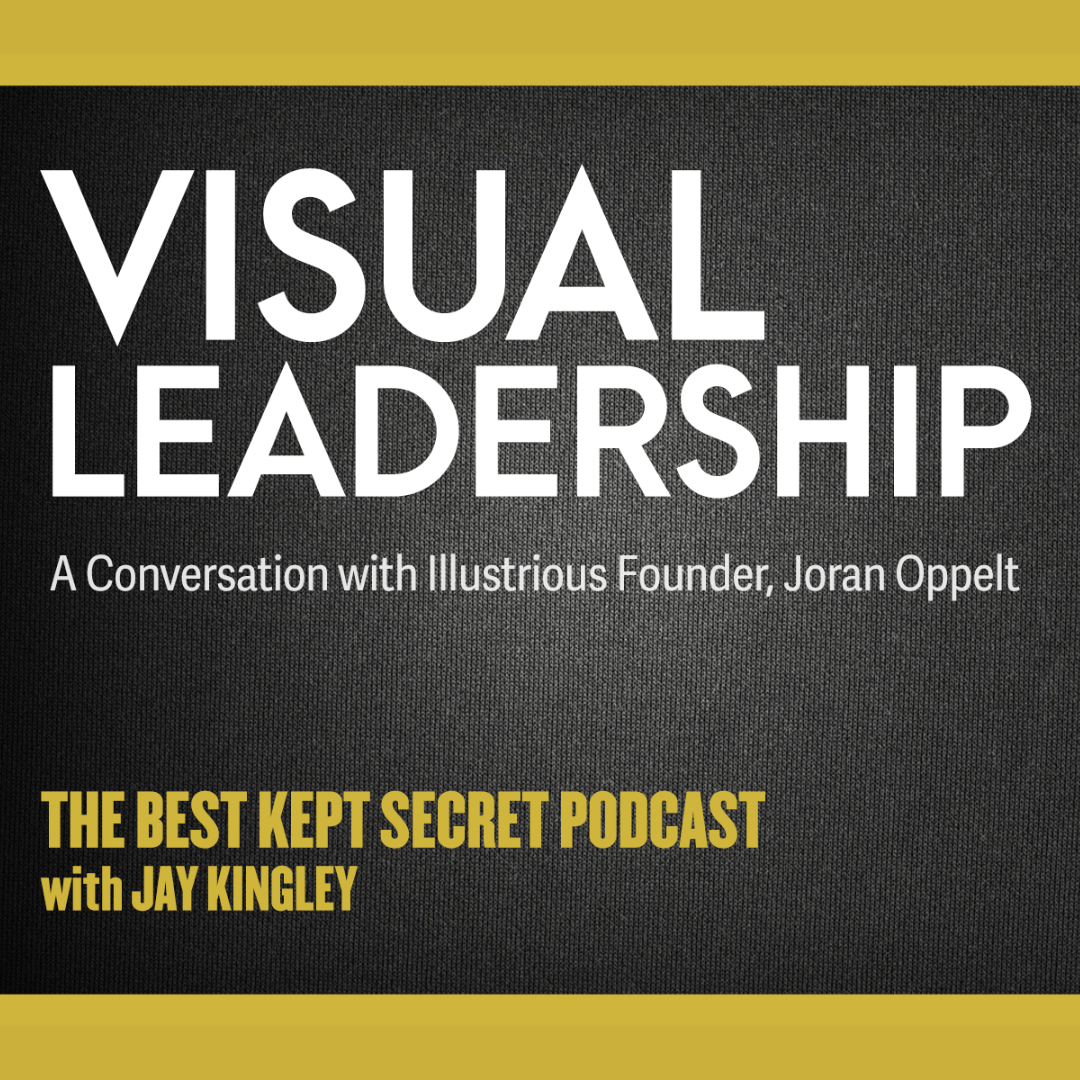|
"The Business Benefits of Visual Thinking" Excerpt from The Best Kept Secret Podcast (Part 3/8) Jay: You talk about the importance of communication which clearly makes a lot of sense. You were very specific about the value of visual communication and visual tools. How about amplifying that? Give us some examples of what you mean and why. Visual communication gives you a lot of return on technique compared to, “let me just get people around the table or on a zoom call and start wagging my finger.” Joran: For me, you can communicate visually if you think visually. Visual thinking is different from design thinking. Design thinking is where you're moving in iterations and you are thinking like an artist by testing, experimenting and validating. That's not what I'm talking about. I'm talking about visual thinking, which means that as opposed to thinking like an artist you are behaving like an artist. When you need to talk about a concept, you draw a picture of it. When you need to host a meeting you have a visual agenda or use a visual pie chart. It's proven that visual communication connects with our brains faster. We're able to process the information quicker and retain that information longer. All of that is proven science. Visual thinking leads to visual communication, and that's how I recommend leading every meeting – every engagement. When you see visual thinking happening in a group, it may look like storytelling. Like people gathered around a fire or drawing pictures on the wall. Whether that's a team retrospective, or a customer journey map, or a cone of plausibility, if you put that image on a wall and you gather your team around it, you will create a conversation that will lead to more clarity. It's similar to the pushback which we experience in facilitation and consulting. You want people to push back on concepts and images. If I'm talking about a tree in a forest and somebody thinks I'm talking about a pine tree, but I’m imagining something else, that's not going to be an effective meeting. I need to be able to say (or illustrate), “No, it's an apple tree and there are green apples on the tree, and it's not standing alone in the orchard. It's got a bunch of trees around it.” We are then super clear as a team what we're talking about. We are “painting done” at that point, and that's why getting these images on a wall, thinking visually, communicating visually is so important. It's effective, it's faster, it empowers your team to be involved in the process and leading becomes really easy at that point. Jay: I think it's very interesting. Visual storytelling and visual thinking is definitely a twist that I haven't really heard before and I think that is well worth exploring, but I'm sitting here saying to myself, “It sounds good, but how does it move the needle for my business?”
So when you have done what you advocate – when you have either worked with clients or seen other companies that have used these techniques – how do you see the business benefiting? What are some objective metrics that you can point to that demonstrate effectiveness? Joran: Most recently we worked with a big sales software company and we built a journey map for them that was focused on their complex sales deals and their discovery process – all the way from discovery to close. We built a Mural for them because they were struggling with their people sticking to the sales process. They're a huge company. They need all their salespeople to do the same thing. It's replicable and scalable for a reason. They needed a map built that every salesperson could adhere to. So that every sales manager, mentor, or coach could go in asynchronously and set up for coaching calls and talk about the discovery process and the stakeholder map, and ask things like, “Who are you talking to? Who else is connected to the deal? Who else is holding the purse strings?” Doing that visually has optimized those coaching calls. It has increased adoption to a very important process for a company as large as they are. We also worked with a global AV company that had 13 strategic initiatives. If we're talking about a balanced scorecard, these are high level initiatives. They were calling them “must win battles.” Well, for an executive team of 12 people, you can't hold 13 “must win battles” in your head all the time. “All 13 of these things are equally important?” That can't be true. So breaking it down visually using the OKRs process and saying, “Okay, what are the top three things we need to be able to recite in the hallway? Can my team reflect back to me what our top three priorities are this quarter?” We were able to do that visually using graphic recording and the OKRs process. Now, those hand-drawn posters are hanging in the common areas and conference rooms throughout their office. It's been transformative for their culture. And it's impacting the bottom line. Learn more by scheduling a free discovery session with Joran Oppelt: https://calendly.com/joranslane/30min
0 Comments
Your comment will be posted after it is approved.
Leave a Reply. |
Details
ABOUT THE AuthorJoran Slane Oppelt is an international speaker, author and consultant with certifications in coaching, storytelling, design thinking and virtual facilitation. Archives
March 2024
Categories
All
|


 RSS Feed
RSS Feed